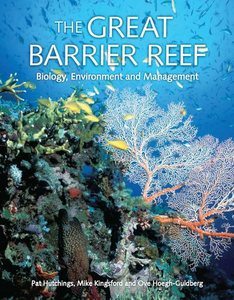Marine mammals
Marsh, H. (2008) Marine mammals. In: Hutchings, Pat, Kingsford, Mike, and Hoegh-Guldberg, Ove, (eds.) The Great Barrier Reef: biology, environment and management. CSIRO Publishing, Collingwood, VIC, Australia, pp. 350-358.
![[img]](https://researchonline.jcu.edu.au/7467/2.hassmallThumbnailVersion/7467_Marsh_2008_cover.jpg)
|
Image (JPEG) (Book Cover)
- Cover Image
Download (150kB) |
|
|
PDF (Published Version)
- Published Version
Restricted to Repository staff only |
Abstract
[Extract] The Great Barrier Reef World Heritage Area supports a diverse marine mammal fauna. As listed in Table 30.1, our knowledge of their distributions suggests that more than 30 species of marine mammals spend at least part of their lives in the region. Almost all of these animals are members of the Order Cetacea (whales and dolphins). The region also supports globally significant populations of one member of the Order Sirenia (sea cows), the dugong, Dugong dugon. Both cetaceans and sirenians spend their entire lives in the water. There are two major groups (suborders) of cetaceans, the Mysticeti or baleen whales and the Odontoceti or toothed whales. Baleen whales lack teeth and have baleen plates hanging from roof of their mouths. Toothed whales generally capture their prey, typically fish or squid, one at a time. Their most usual dentition is a large number (up to 100) of peg-like teeth, all similar in form in each of the upper and lower jaws. Each cetacean suborder contains several families, which in turn contain one or more genera. Two baleen whales, the humpback, Megaptera novaengliae, and the dwarf minke, Balaenoptera acutorostrata, are commonly seen in the GBR region during the winter and are important tourist attractions. The coastal odontocetes include the rare Indo-Pacific hump-backed dolphins, Sousa chinensis (Fig. 30.1), and Australian snubfin dolphins, Orcaella heinsohni (Fig. 30.2) (the only cetacean endemic to Australia and Papua New Guinea waters). Some species such as killer whales and common dolphins are known to occur in the GBR region but are rarely reported. Other species have never been seen alive in the region but are known from strandings on the adjacent Queensland coast. One species, Longman’s beaked whale, Indopacetus pacificus, was considered to be the world’s rarest cetacean until recently. A skull found in Mackay, Queensland, was the basis for the initial description of this species. The dugong is of great cultural and dietary value to indigenous Australians living adjacent to the GBR region. The importance of the populations of dugongs occurring in the GBR were part of the rationale for the region’s World Heritage Listing.
| Item ID: | 7467 |
|---|---|
| Item Type: | Book Chapter (Research - B1) |
| ISBN: | 978-0-643-09557-1 |
| Related URLs: | |
| Date Deposited: | 05 Jan 2010 23:19 |
| FoR Codes: | 05 ENVIRONMENTAL SCIENCES > 0502 Environmental Science and Management > 050205 Environmental Management @ 100% |
| SEO Codes: | 96 ENVIRONMENT > 9606 Environmental and Natural Resource Evaluation > 960699 Environmental and Natural Resource Evaluation not elsewhere classified @ 100% |
| Downloads: |
Total: 69 Last 12 Months: 4 |
| More Statistics |



